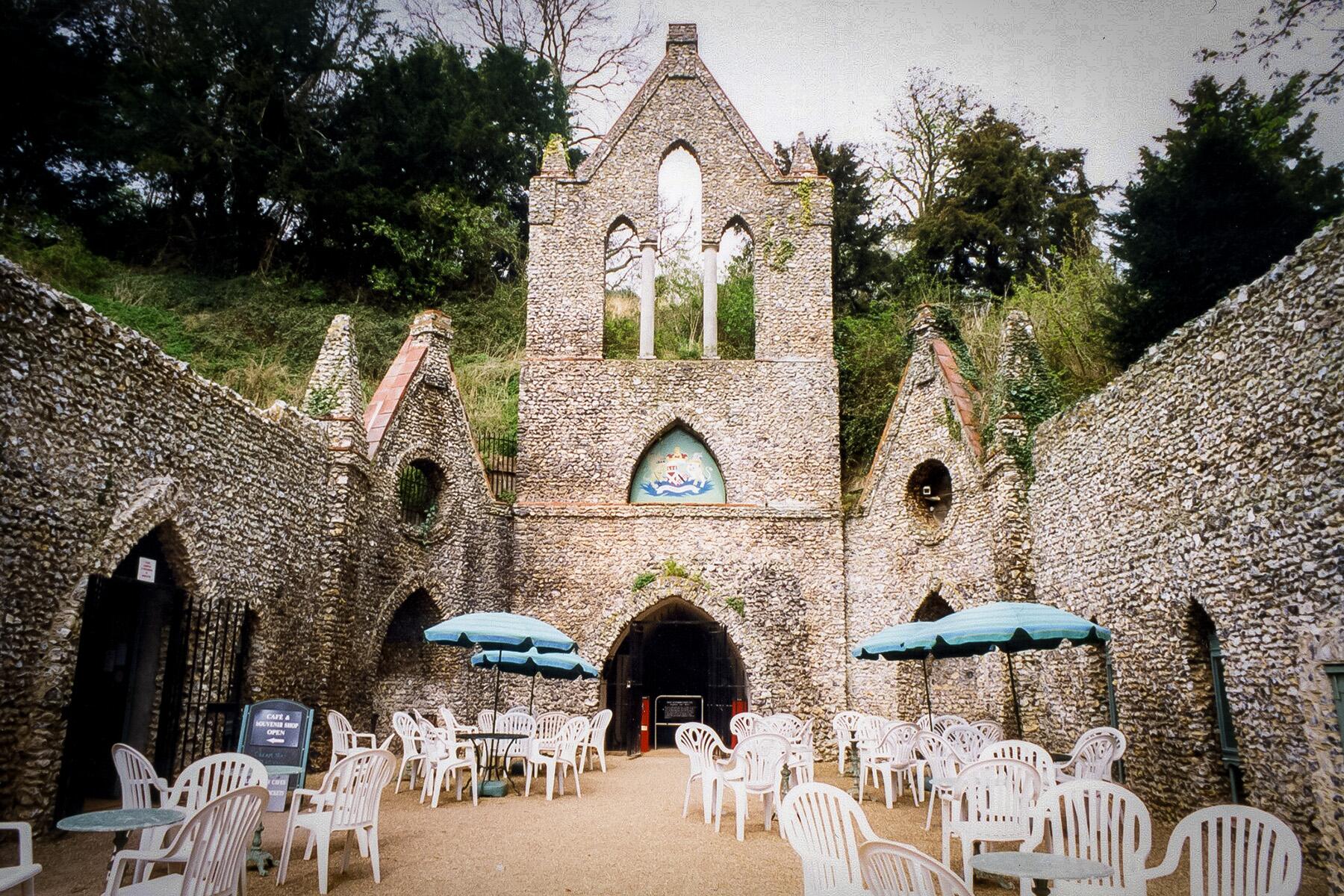Long before the Hellfire Club became associated with the new season of “Stranger Things,” it was an 18th-century gathering of hedonistic British aristocracy.
“Welcome to the River Styx!” beamed Willow Randall, tour guide at the Hellfire Caves in the south-eastern English county of Buckinghamshire. “We’re about to pass off into hell.”
We were standing some 300 feet beneath the village of West Wycombe in the warren-like Hellfire Caves, which were tunneled into the earth here in the 18th century at the behest of local landowner Francis Dashwood. This rural idyll, nestled in the Chiltern Hills in a well-to-do corner of England, seems an unlikely setting for British members of parliament to engage in blasphemous mock-religious rituals and bacchanalian orgies. But that is exactly what was on the menu for the Hellfire Club, a society of blue-blooded rakes who gathered here in the mid-18th century.
Their number included the cream of society: among the members listed on a plaque in the caves were a dozen MPs, the First Lord of the Admiralty, the son of the Archbishop of Canterbury, and a certain Benjamin Franklin, who spent many years from the 1750s–1770s in London, originally as a representative of the Pennsylvania Assembly. Dashwood himself, the group’s leader, was the Chancellor of the Exchequer–the second most powerful political figure in Britain.
Recommended Fodor’s Video
The Origins of the Hellfire Club
Dashwood was a colorful character. Born into an aristocratic family in London in 1708, he inherited his father’s title and West Wycombe estate at the age of 15. As a young man, he took full advantage of his wealth and status on a series of grand tours around Europe. In the process, he gained infamy as a carouser and enthusiastic libertine.
In Russia, he was alleged to have impersonated Charles XII of Sweden, Russia’s great enemy at the time, and attempted to seduce the Tsarina. It was also said that he was expelled from the Papal States during his time in Italy. The latter charge would set a pattern for Dashwood’s later life, characterized by a fierce anti-religious sentiment that found expression in his activities with the Hellfire Club.

An incorrigible bon viveur, Dashwood had already established two dining and drinking societies before setting up what would become known as the Hellfire Club. The Society of Dilettanti, formed in 1732, was ostensibly created for the appreciation of classical art but seemed to have quickly descended into something more dissolute. The writer Horace Walpole, a former member, described it as “a club for which the nominal qualification is having been to Italy, and the real one, being drunk.”
“[A] club for which the nominal qualification is having been to Italy, and the real one, being drunk.”
Nevertheless, the society still exists today; its membership of around 60, is a fiercely guarded secret. Dashwood also established the Divan Club for people to gather and talk about their experiences traveling in the Ottoman Empire.
In 1746, however, at the George and Vulture pub in London (opened in 1142 and still in business today), Dashwood first gathered together the band of upper-crust hedonists who would later become known as the Hellfire Club. They originally went by the name of the Order of the Knights of St. Francis and were limited to 12 members–a not accidental piece of numerology, given the group’s satirical anti-Christian activities. Indeed, Dashwood decided that the ruins of Medmenham Abbey, a Christian monastery dissolved by Henry VIII in 1547, was the perfect headquarters for his new organization, which was christened the Medmenham Friars.
In these hallowed grounds were pursued carnal pleasures. “Sex … was one of the main preoccupations of the Friars,” wrote historian Evelyn Lord in The Hell-Fire Clubs. Dashwood’s old associate Horace Walpole visited the abbey and wrote that the club had adorned the chapel with “bawdy pictures” and would take “any woman they wanted” into the old monks’ cells, dressed in mock-religious clothing.
“Men came to these meetings dressed as monks, women dressed as nuns, and Dashwood came dressed as the priest,” Randall told me as we walked through the caves. “They all wore masks, so as to remain anonymous.”
Their motto was Fais ce que tu voudras–“Do what thou wilt”–an exhortation which would later gain infamy as the credo of Aleister Crowley, a notorious English occultist of the 19th and 20th centuries.
The excavation of Dashwood’s caves in West Wycombe was completed in 1752, and the meetings of the club moved into the caves at some point after this; exact dates are hazy because the club’s records were ordered to be burned by its secretary, Paul Whitehead, three days before his death in 1774.
The Geography of the Caves
The entrance to the Hellfire Caves is marked by an eye-catching flint structure, resembling the façade of a Gothic church. The path soon descends into the tunnels, carved in the vaulted shape of a nave, which branch off into small chambers. In one of them sits a waxwork figure of Paul Whitehead, alongside the original urn in which he donated his heart to Francis Dashwood after his death.

Shortly beyond lies the caves’ largest room, the “Great Hall”–beehive-shaped, with black scars on the walls from the oil which was thrown there and set on fire in lieu of lamps during the club’s gatherings. “This is where a lot of the social meetings took place,” Randall said. “These alcoves had beds in them, and a little railing with a curtain across them.” Pointing to linear engravings beneath the alcoves, she said, “These aren’t pick marks; they’re tally marks, of how many they took to bed. Claret was the drink of choice, and a live band would play here.”
Walpole wrote that “practice was rigorously pagan: Bacchus and Venus were the deities to whom they almost publicly sacrificed.”
The “River Styx” at which Randall and I stood is a modest natural stream within the caves, uncovered during Dashwood’s excavations. Beyond this is the “Inner Temple”–a small circular room, directly beneath West Wycombe’s Saint Lawrence Church, in which the Hellfire Club were said to gather for their most transgressive rituals. It stands directly beneath West Wycombe’s Saint Lawrence Church–directly beneath the altar, to be precise.
The layout of the caves reflects the fascinations of Dashwood’s era, both with the ancient world and with the Italy he would have seen on his grand tours–a gondola was even brought in from Venice to make the journey of a few meters across the Styx. Whisperings of explicit Satanism and human sacrifice, however, remain in the realm of rumor, largely thanks to Whitehead’s burning of the records on his deathbed–although, as Randall pointed out, “he wouldn’t have done that for no reason.”




